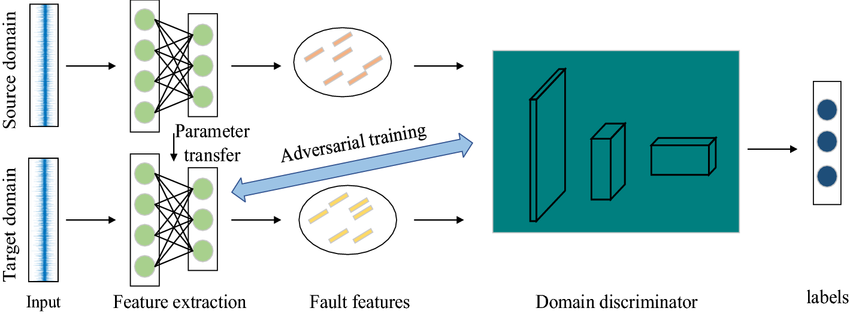
Adversarial transfer learning is a cutting-edge technique in the field of artificial intelligence that involves leveraging the knowledge gained from one task to improve the performance of a related task. This approach is particularly useful in scenarios where labeled data is scarce or expensive to obtain, as it allows for the transfer of knowledge from a source domain to a target domain.
The concept of adversarial transfer learning is based on the idea of using adversarial training to align the feature distributions of the source and target domains. By training a model to simultaneously minimize the classification error on the source domain and maximize the error on the target domain, the model is forced to learn features that are robust and generalizable across domains.
One of the key advantages of adversarial transfer learning is its ability to adapt to new and unseen data distributions without the need for retraining the entire model from scratch. This makes it particularly well-suited for tasks such as domain adaptation, where the goal is to improve the performance of a model on a target domain with limited labeled data.
In practice, adversarial transfer learning involves training a model with two components: a feature extractor and a domain classifier. The feature extractor is responsible for learning a set of features that are discriminative for the task at hand, while the domain classifier is tasked with distinguishing between the source and target domains. By jointly training these two components, the model is able to learn features that are both task-specific and domain-invariant.
Adversarial transfer learning has been successfully applied to a wide range of tasks, including image classification, object detection, and natural language processing. In image classification, for example, adversarial transfer learning has been used to improve the performance of models on tasks such as fine-grained classification and image segmentation. Similarly, in natural language processing, adversarial transfer learning has been shown to be effective in tasks such as sentiment analysis and machine translation.
Overall, adversarial transfer learning is a powerful technique that has the potential to significantly improve the performance of AI models in a wide range of applications. By leveraging the knowledge gained from one task to enhance the performance of related tasks, adversarial transfer learning offers a promising approach to overcoming the challenges of limited labeled data and domain shift in machine learning.
1. Improved Model Performance: Adversarial transfer learning allows AI models to learn from related tasks or domains, leading to improved performance on the primary task at hand.
2. Robustness: By exposing the model to adversarial examples during training, it becomes more robust and resistant to attacks in real-world scenarios.
3. Generalization: Adversarial transfer learning helps the model generalize better to unseen data by learning from a diverse set of related tasks.
4. Efficiency: By leveraging knowledge from pre-trained models, adversarial transfer learning can significantly reduce the amount of data and computational resources needed for training.
5. Real-World Applications: This technique is crucial for various AI applications such as computer vision, natural language processing, and autonomous driving, where robustness and generalization are essential.
1. Adversarial transfer learning can be used in cybersecurity to detect and prevent malicious attacks by transferring knowledge from one domain to another to improve detection capabilities.
2. Adversarial transfer learning can be applied in image recognition to improve the accuracy of identifying objects in images by transferring knowledge learned from one dataset to another.
3. Adversarial transfer learning can be used in natural language processing to improve the performance of sentiment analysis models by transferring knowledge from one domain to another to better understand and classify text.
4. Adversarial transfer learning can be utilized in healthcare to improve the accuracy of diagnosing diseases by transferring knowledge from one medical dataset to another to enhance predictive models.
5. Adversarial transfer learning can be applied in financial fraud detection to improve the detection of fraudulent activities by transferring knowledge from one dataset to another to enhance anomaly detection algorithms.
There are no results matching your search.
ResetThere are no results matching your search.
Reset